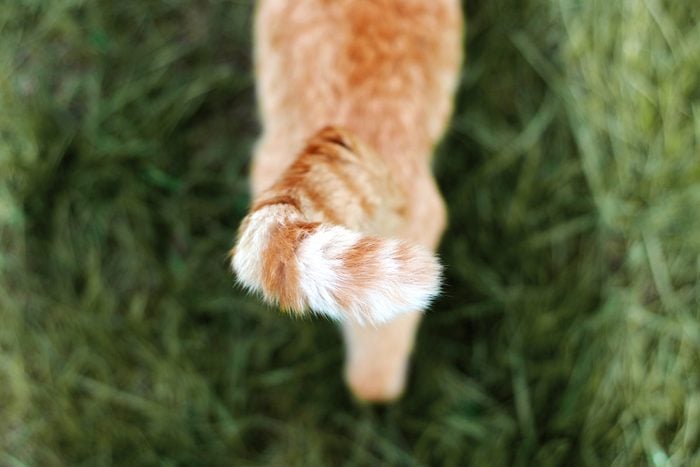
Kitty communication—decoded
Hissing is a clear indication that we should probably back off. Meowing may be an adorable way to say good morning or a polite way to say, “Kitty kibble, please!” But that’s where the vocal communication ends, even though there are many other things your cat would love to tell you. Surely, there must be other ways to understand what those things are. Well, the cat’s out of the bag—and its tail has something to say. In fact, it has a whole lot to say, and what it means depends on whether it’s curled, puffed up, pointing straight in the air, and more. Here are the many meanings behind this subtle form of kitty communication.
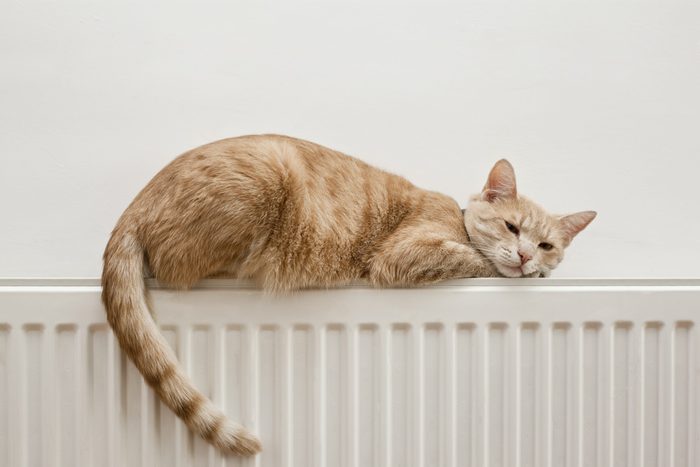
Flittering dreams
Just like humans, animals often move a bit in their sleep. You’ve probably noticed a dog “running” in their sleep like they’re chasing a rabbit. Cats dream and move while they’re snoozing, too. “Typically, this means an active form of dreaming,” says Natalie Marks, DVM, a cat expert and veterinary partner with Royal Canin. “But, just like the old adage to never wake a sleeping baby, never wake or startle a sleeping cat!” By the way, this is why cats sleep so much.
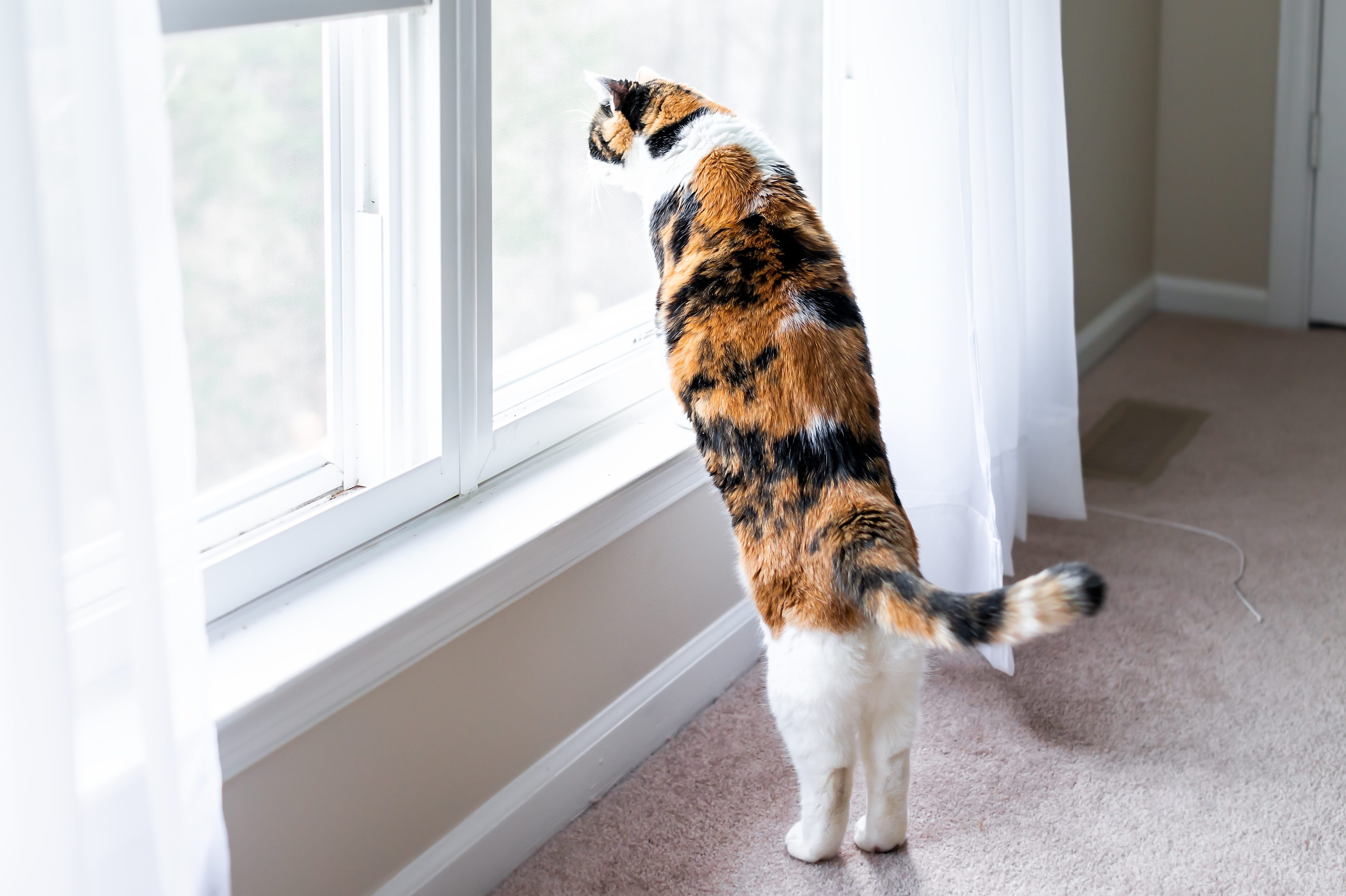
Straight up, with a twitch
You might call it the aristocrat tail. But a tail that is presenting straight up, reaching toward the ceiling, doesn’t belong to a pretentious and aloof cat. Actually, it’s the exact opposite. “It conveys happiness, confidence, comfort in its surroundings, and a willingness to be friendly and interactive,” says Dr. Marks. “The pinnacle happy moment is if the tip of the tail shows a tiny twitch—that’s a really happy cat!” What doesn’t make most cats happy? Getting wet. Here’s why most cats hate water.
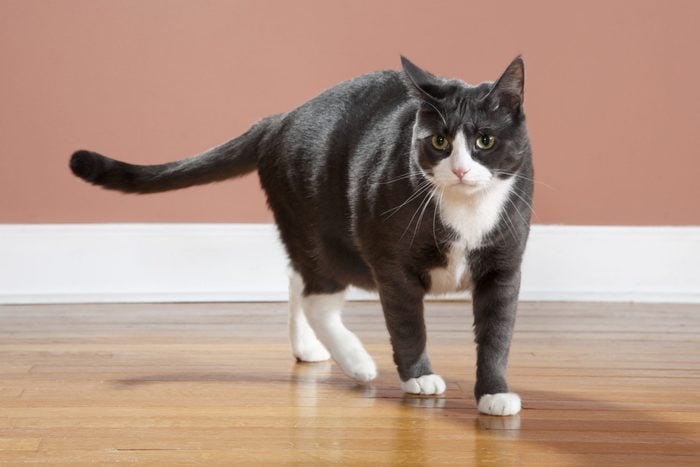
Whip it good
A tail that whips side to side, like it’s sweeping the floor, is a clear sign that something isn’t right in the kitty kingdom. “Rapid whipping back and forth can indicate fear, but also reactivity,” explains Dr. Marks. “And if a cat is extremely fearful, it can be a trigger for aggressive behavior.” Check out these other subtle (and not so subtle) signs your cat is secretly mad at you.
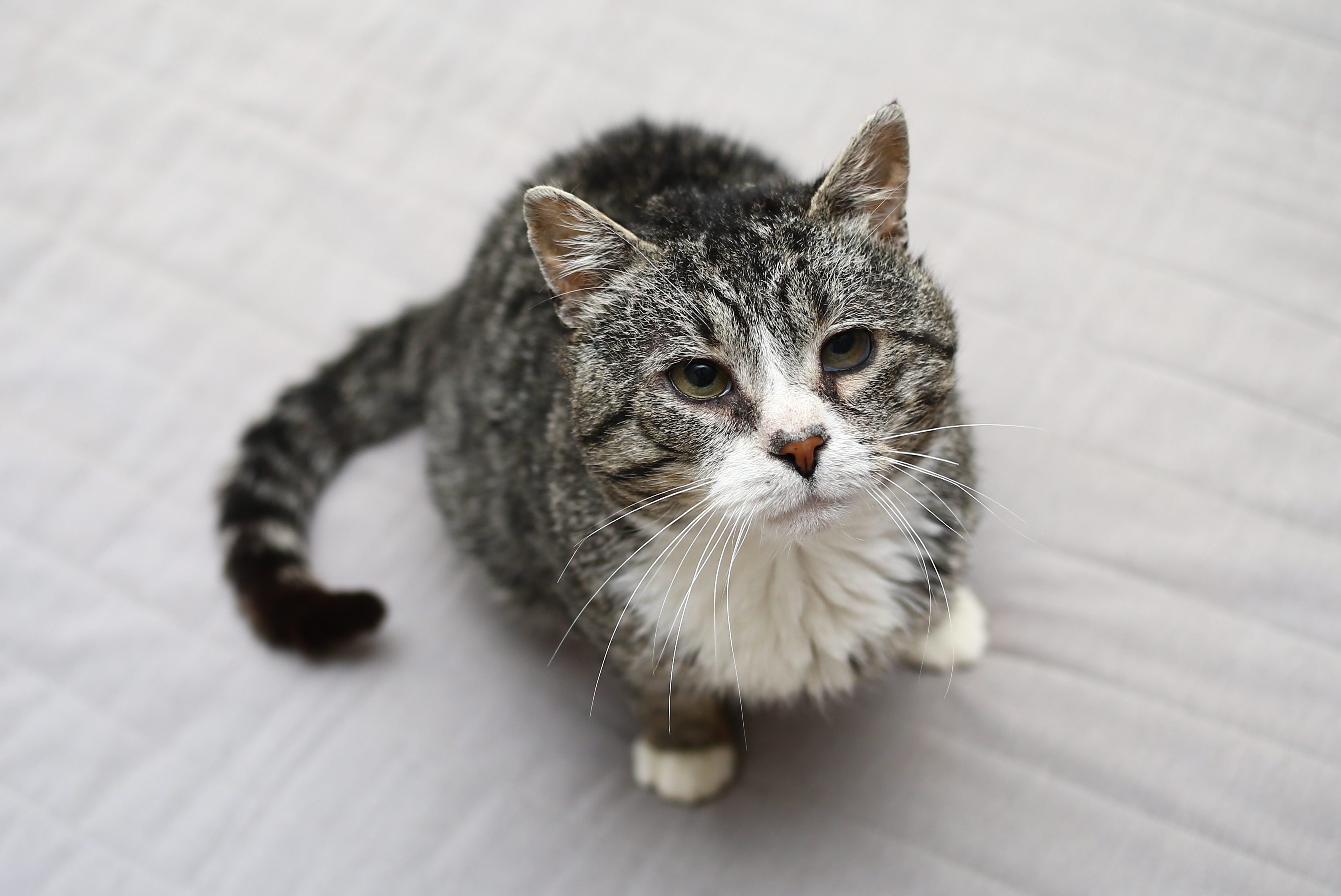
Slow-moving tail
Have you ever walked into a room to find your cat staring at something, and the only thing that’s moving is your cat’s tail? You might not see anything out of the ordinary, but she sure does. “A slow-moving tail indicates focus and intention around an upcoming event—pouncing on a toy, chasing a housemate, etc.,” says Dr. Marks. “It shows that the cat is getting ready to do a physical movement with purpose.” Let’s hope that “purpose” has to do with pouncing on a toy mouse and not a real one somewhere in the room!
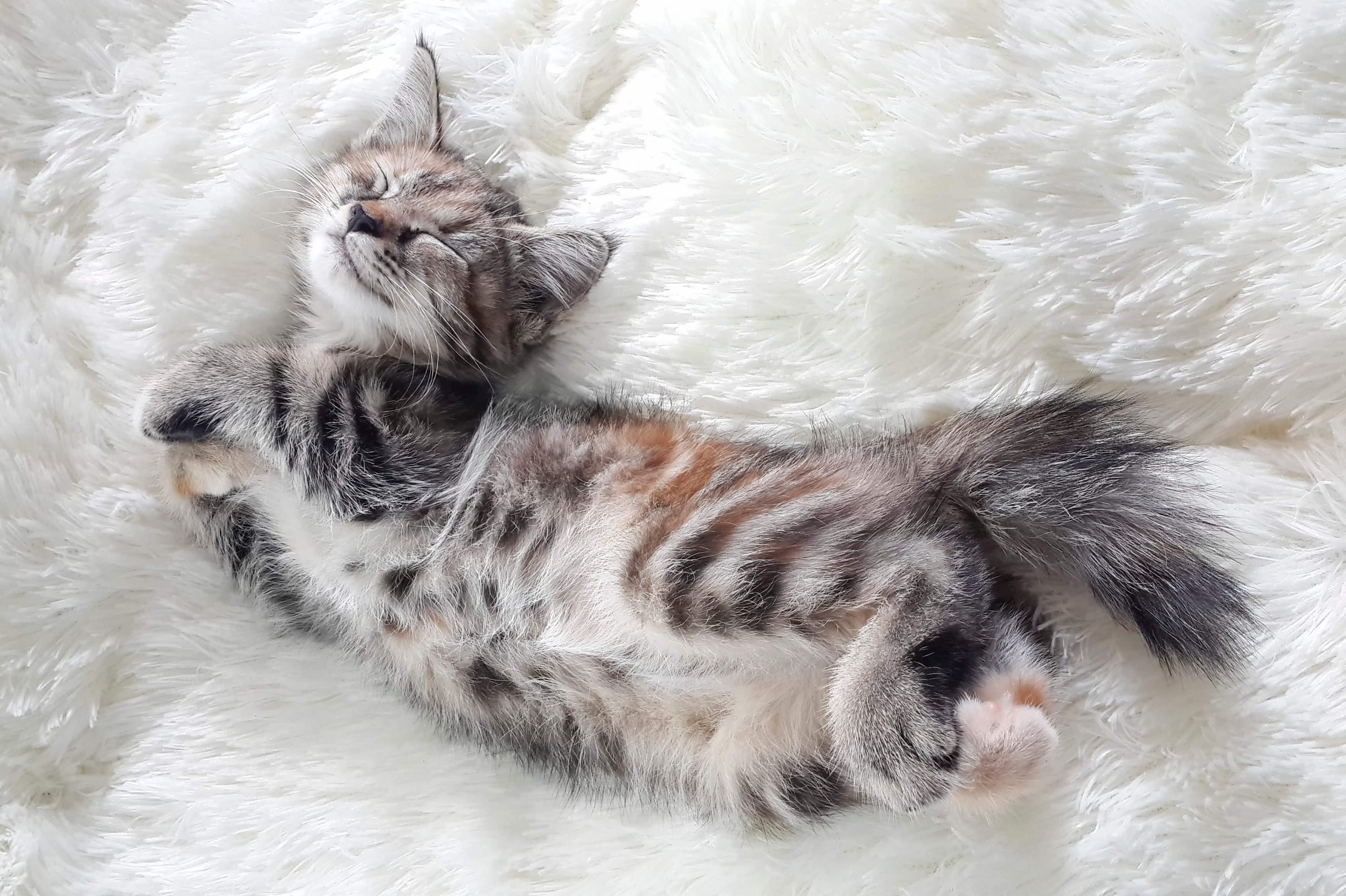
Sleepy tail
Your cat has no desire to hit the snooze button. There’s a perfectly natural reason why they pounce on your face before your alarm goes off: Cats are crepuscular, which means they’re most active between dusk and dawn. That’s leaves a lot of time for other activities, like taking cat naps, which they do from 12 to 16 hours a day. They snooze in all kinds of positions that confound us, but when we see their tail tucked underneath their cute little face while they’re sleeping, Dr. Marks says you’re seeing “a very comfortable and relaxed cat.”
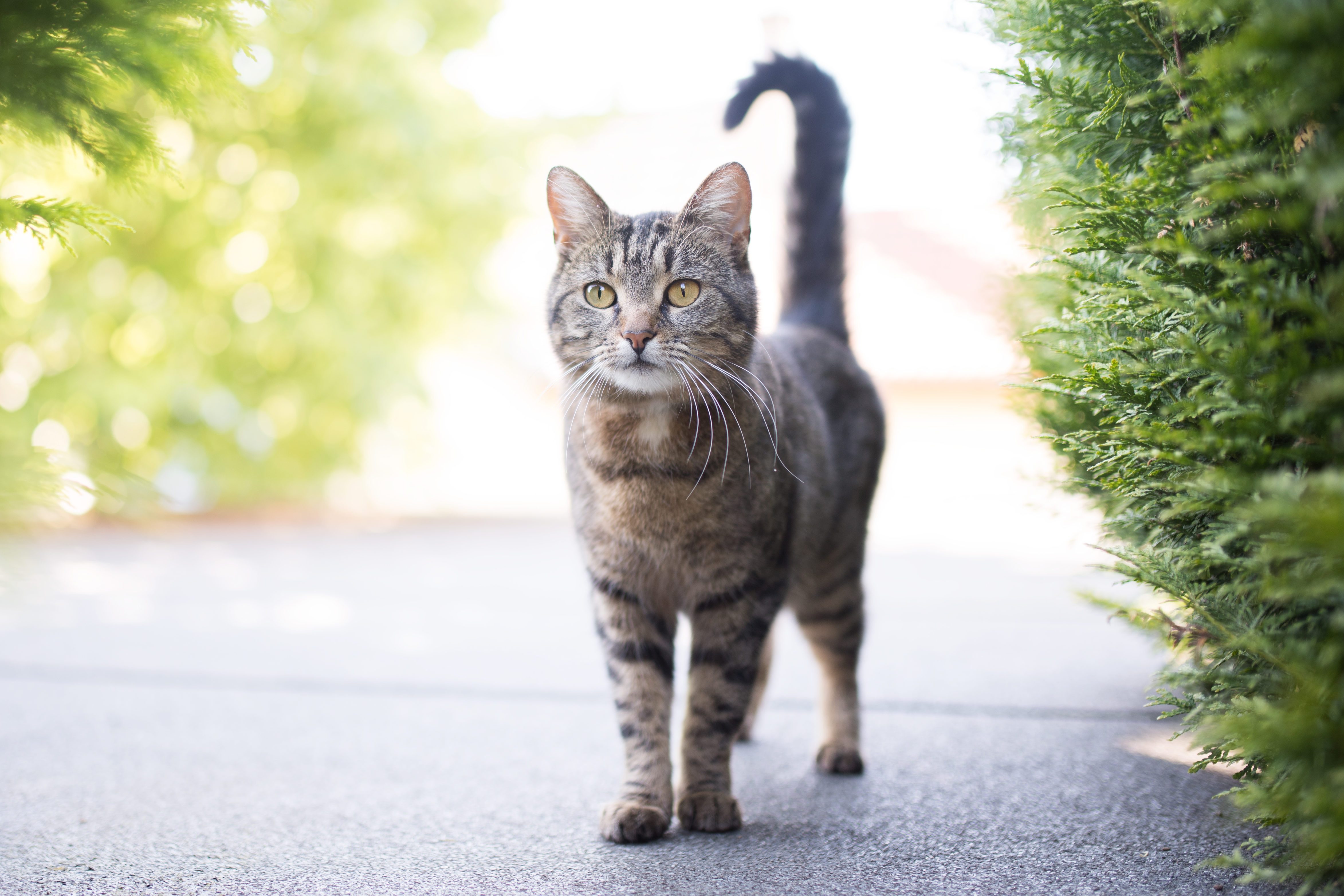
There’s no question about it
If you notice your cat carrying its tail high with a little curl or curve at the end that resembles a question mark, that’s the green light for playtime. “This is a wonderful time for pet owners to engage in interactive play and exercise,” Dr. Mark says. “Your cat should be quite responsive.” Since cats can sleep up to 16 hours a day and spend up to six hours grooming a day, this is a good time to take advantage of their playful mood. Here are more telltale signs your cat is happy.
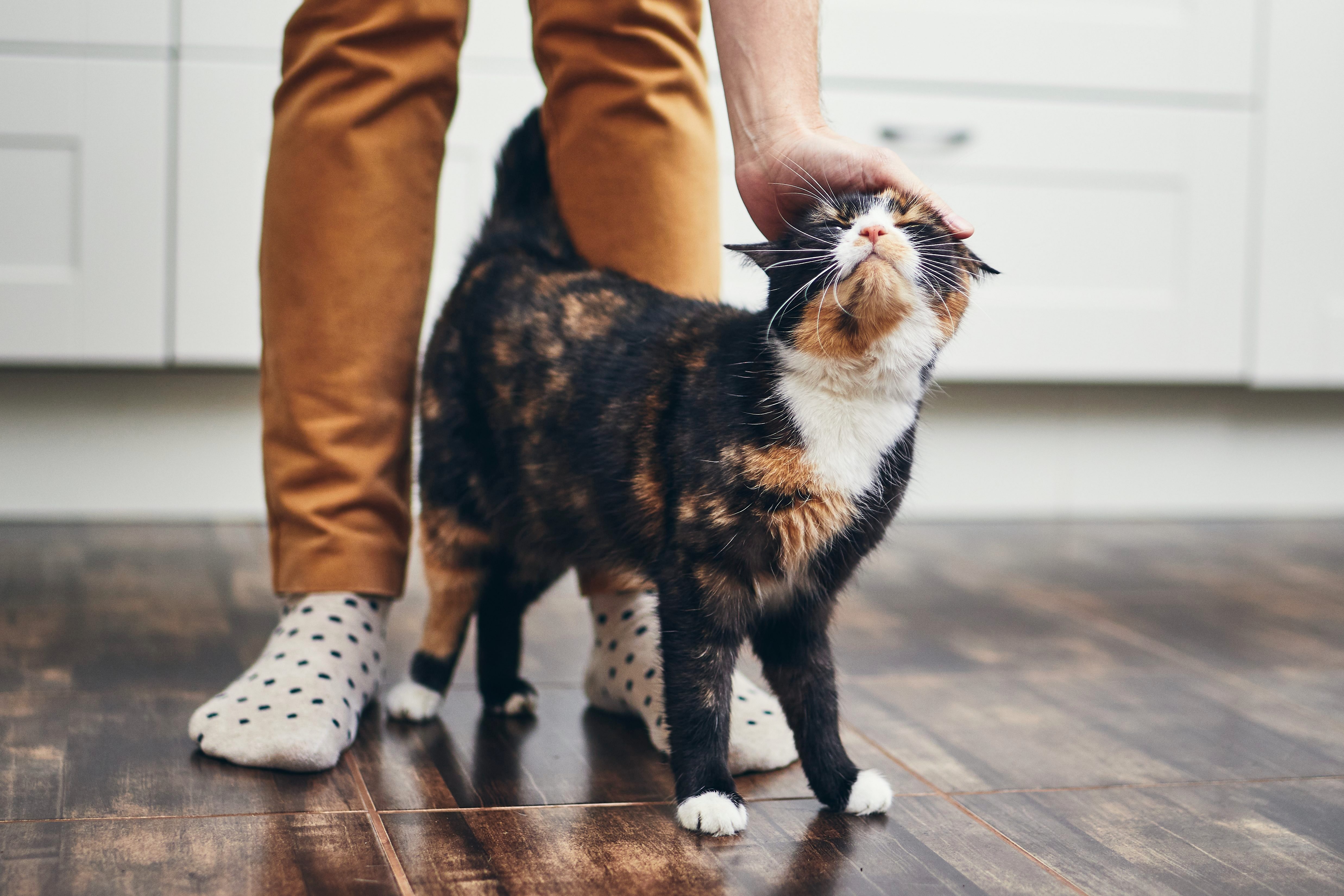
A tail ‘stashe
When you come home to a dog, it’s an all-out welcome-home party. There’s jumping, tail-wagging, and lots of slobbery kisses. Cats, well…let’s just say they’re a bit more subtle. Some might sashay by your leg, while others might not acknowledge you at all, preferring to check you out from the coveted sunny spot by the window. Later, when they forgive you for leaving them, they might snuggle in close and curl their tail around your face. What may seem like a bold and rude way to make contact is actually a genuine display of affection. “Cats curve their tail around people or other cats that they are bonded to or feel happy around,” explains Dr. Marks. “This behavior is called affiliative and is a reinforcement of the human-animal bond.”
If you can’t get enough kitty cuddles, these affectionate cat breeds are sure to return the love on a regular basis.
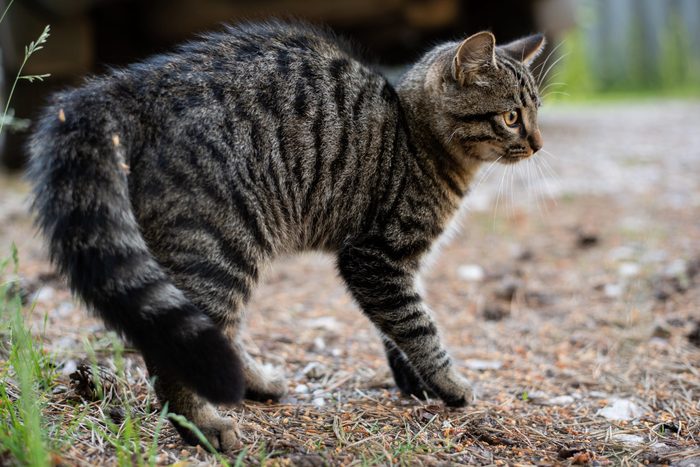
Back off!
There’s nothing subtle about the message your cat’s tail is sending with this position. A tail that is pointing straight down is primarily telling you or furry frenemies to back off. “A low tail typically indicates reactivity, or aggressive mood with the possibility of similar behavior,” explains Dr. Marks. “However, certain breeds like Persians normally have a low tail carriage, and this should not be confused with reactive behavior.” Don’t miss these other cat facts that are purr-fectly fascinating.
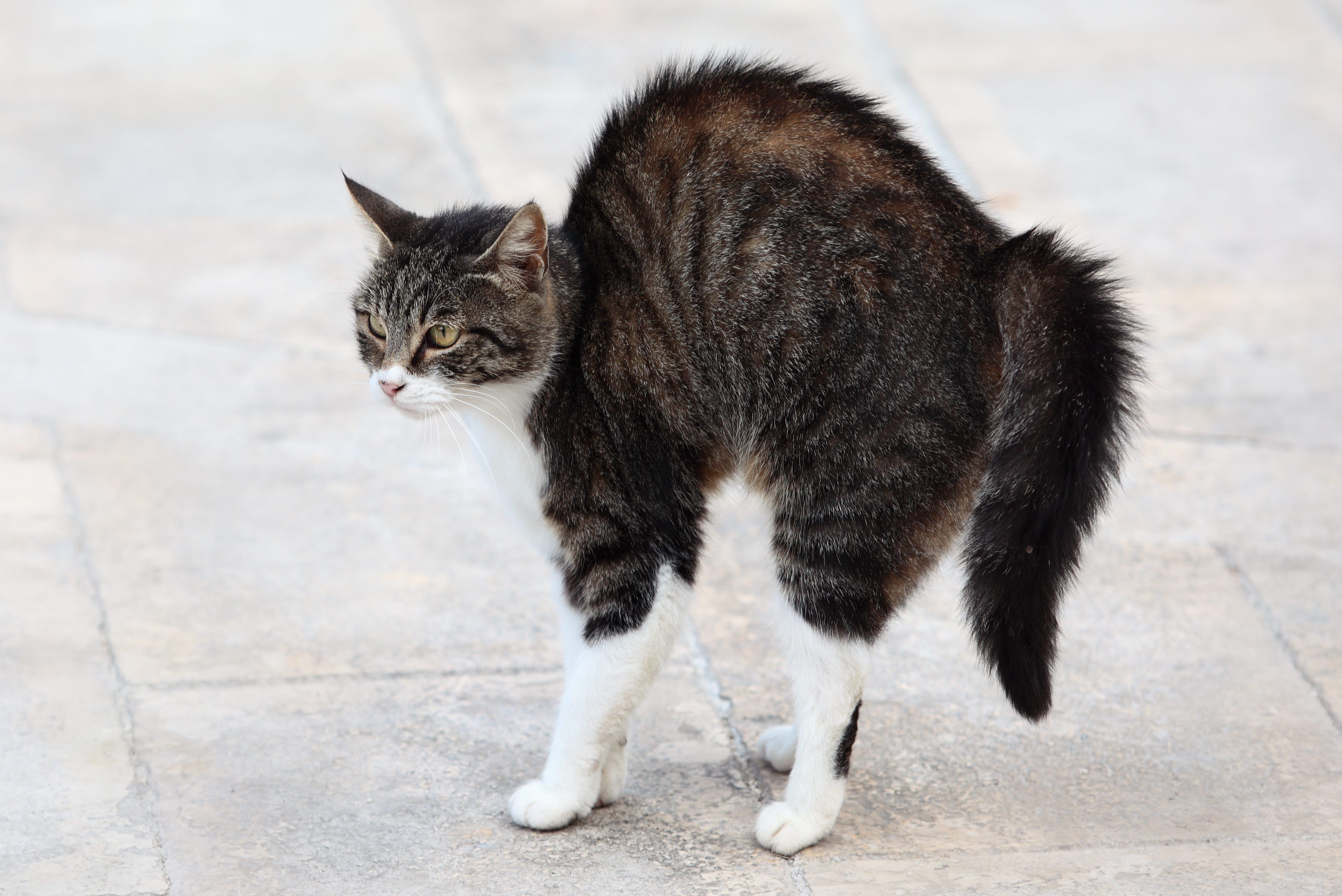
Puff ‘n’ fluff
Puffy and fluffy sounds all cuddly and inviting, but it’s not when it comes to your cat’s tail. If you startle your cat, or if it is frightened of another cat or animal, its tail will be straight up and puffed out. This is a sign of a scared and anxious cat, but instead of shrieking and hiding, your little furball tries to put up a brave front. “The puffing of the tail is done to make the cat look bigger and more ominous in a threatening situation. This cat is nervous, scared, and very agitated,” says Dr. Marks. If your feline friend gets anxious when you take the cat carrier out of the closet, try these tricks to get your cat into a carrier—without getting clawed.
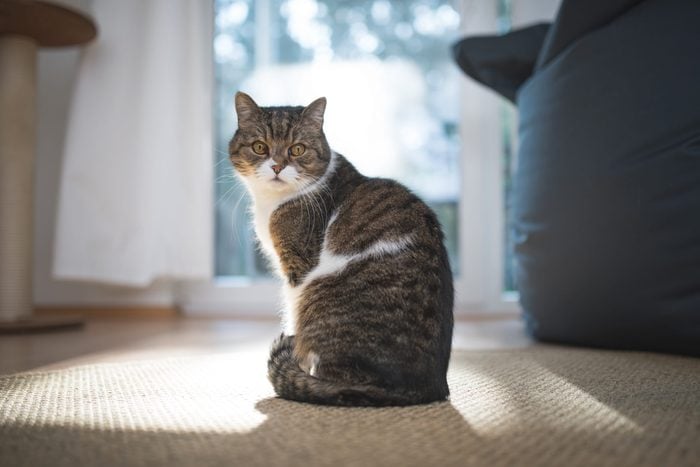
Tail shield
Have you ever noticed how your cat wraps its tail around its paws when it’s outside? This doesn’t necessarily happen when cats are cold. Cats wrap their tails around their paws indoors or outdoors as a way to protect themselves. Dr. Marks says your cat may be exhibiting nervousness or submissiveness when this happens. It could also mean something more. “If the cat is crouching and tucking its head as well, it can mean fear or pain,” says Dr. Marks. Here are some other silent signs that your “healthy” cat is actually sick.
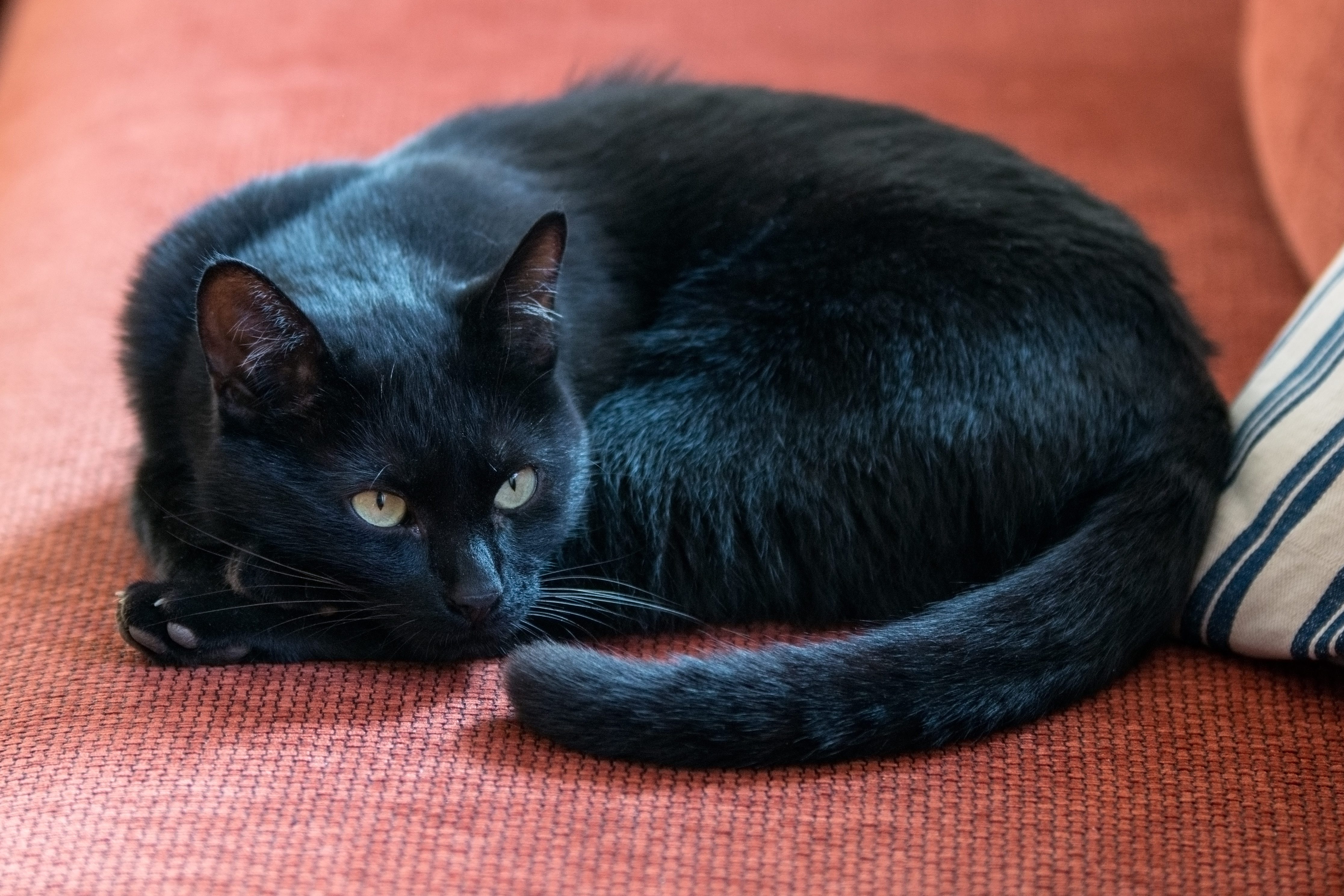
Sick tail
A cat’s tail not only conveys emotions—it can also indicate that your kitty isn’t feeling all that frisky. If your cat doesn’t seem to have enough strength to wag its tail or its tail hangs limply, it could be a sign of illness. Other noteworthy tail symptoms are lacerations, bleeding, bite marks, abscesses, patches of missing fur or skin, or discoloration. Any of these signs would warrant an immediate trip to the vet, says Dr. Marks. If your vet prescribes medication, this is how to give a cat a pill—and actually get your cat to swallow it.
